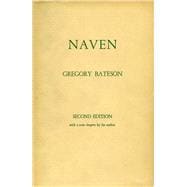| Preface to the Second Edition | vii | ||||
| Foreword | ix | ||||
|
1 | (5) | |||
|
|||||
|
6 | (17) | |||
|
6 | (4) | |||
|
|||||
|
10 | (2) | |||
|
|||||
|
12 | (11) | |||
|
|||||
|
23 | (12) | |||
|
23 | (3) | |||
|
|||||
|
26 | (9) | |||
|
|||||
|
35 | (19) | |||
|
35 | (1) | |||
|
36 | (2) | |||
|
|||||
|
38 | (4) | |||
|
|||||
|
42 | (6) | |||
|
|||||
|
48 | (1) | |||
|
|||||
|
49 | (3) | |||
|
|||||
|
52 | (2) | |||
|
|||||
|
54 | (20) | |||
|
|||||
|
74 | (12) | |||
|
|||||
|
75 | (3) | |||
|
|||||
|
78 | (4) | |||
|
|||||
|
82 | (4) | |||
|
|||||
|
86 | (22) | |||
|
86 | (11) | |||
|
|||||
|
97 | (9) | |||
|
|||||
|
106 | (2) | |||
|
|||||
|
108 | (15) | |||
|
108 | (3) | |||
|
|||||
|
111 | (3) | |||
|
|||||
|
114 | (5) | |||
|
|||||
|
119 | (4) | |||
|
123 | (19) | |||
|
123 | (6) | |||
|
|||||
|
129 | (8) | |||
|
|||||
|
137 | (5) | |||
|
|||||
|
142 | (10) | |||
|
|||||
|
152 | (8) | |||
|
|||||
|
160 | (11) | |||
|
|||||
|
171 | (27) | |||
|
171 | (2) | |||
|
|||||
|
173 | (2) | |||
|
|||||
|
175 | (2) | |||
|
|||||
|
177 | (1) | |||
|
|||||
|
178 | (9) | |||
|
|||||
|
187 | (3) | |||
|
|||||
|
190 | (8) | |||
|
|||||
|
198 | (20) | |||
|
198 | (5) | |||
|
|||||
|
203 | (15) | |||
|
|||||
|
|||||
|
|||||
|
|||||
|
|||||
|
|||||
|
|||||
|
|||||
|
|||||
|
218 | (39) | |||
|
218 | (3) | |||
|
|||||
|
221 | (5) | |||
|
|||||
|
226 | (3) | |||
|
|||||
|
229 | (6) | |||
|
|||||
|
235 | (15) | |||
|
|||||
|
250 | (5) | |||
|
|||||
|
255 | (2) | |||
|
|||||
|
257 | (23) | |||
|
|||||
|
280 | (27) | |||
| Index Glossary of Technical and Native Words | 307 |








